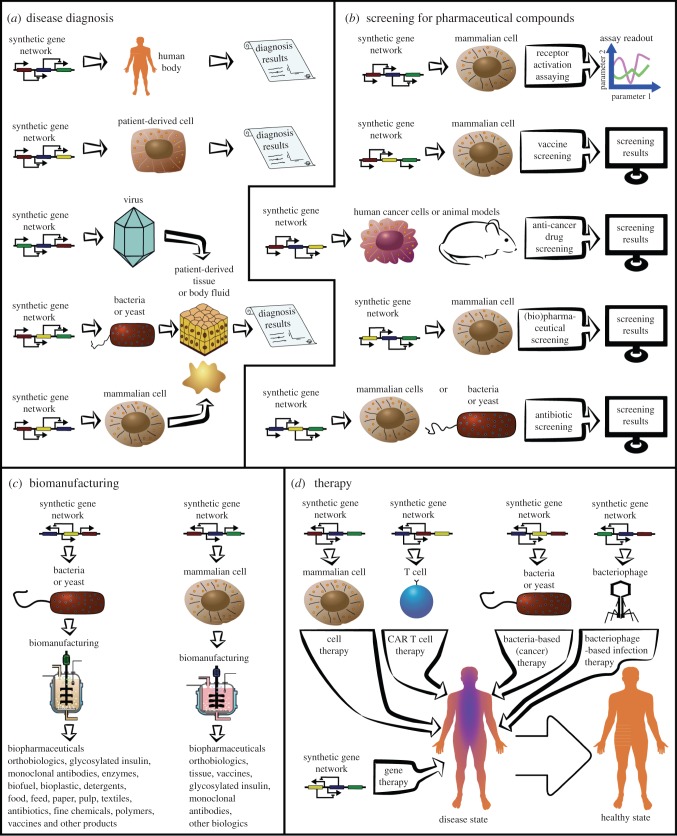Figure 3.
Synthetic biology enlightens the healthcare spectrum from diagnosis of diseases, to drug screening, biomanufacturing and to therapy. (a) Synthetic biology can be applied to diagnose diseases either by inserting gene circuits into the human body or into patient-derived cells. Alternatively, viruses, bacteria or mammalian cells can be used as synthetic network carriers and added to patient-derived tissue or body fluids. In either case, the diagnostic synthetic network should recognize diseased stated and generate a measurable readout in response to the disease. (b) Following disease diagnosis, synthetic biology can also be applied to screen for pharmaceutical compounds to combat diseases. In this case, synthetic circuits inserted into various organisms should mimic disease-related states and the alteration of these states by added compounds should yield a measurable readout. Synthetic gene networks can also be applied to monitor the activation or inactivation of trans-membrane receptor, which are potential drug targets. Additionally, synthetic biology holds great promise to screen for vaccines [146]. (c) After pharmaceuticals are identified, synthetic biology can significantly enhance the manufacturing of these pharmaceuticals and other biologics. (d) Last but not least, synthetic biology enhances state-of-the-art treatments such as gene therapy, cell therapy, CAR T cell immunotherapy, bacterial-based therapy for cancer and other diseases and bacteriophage-based therapy for infectious diseases. (Online version in colour.)

